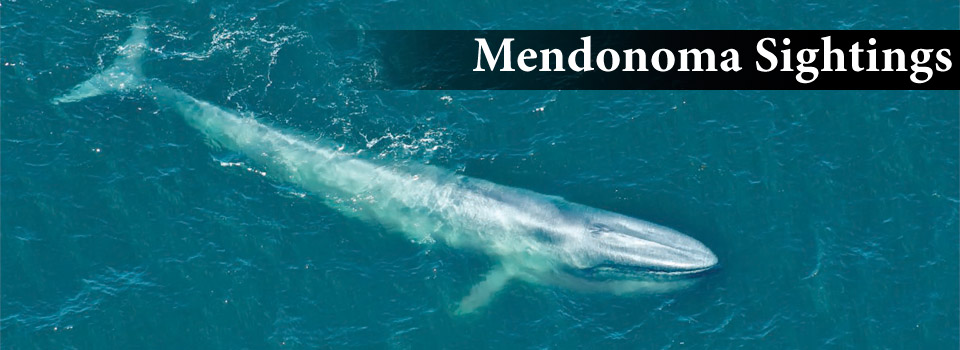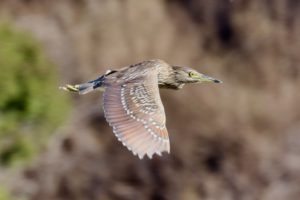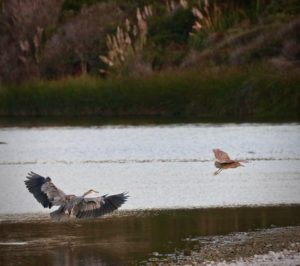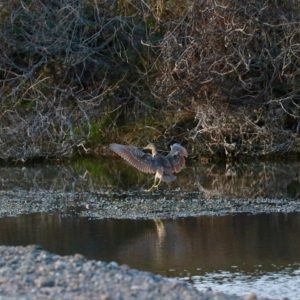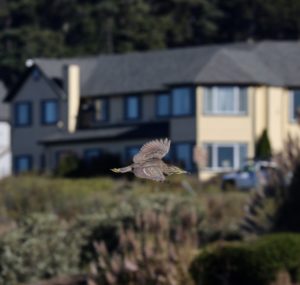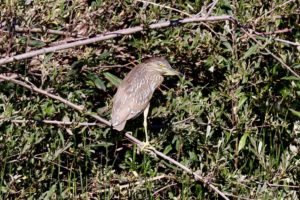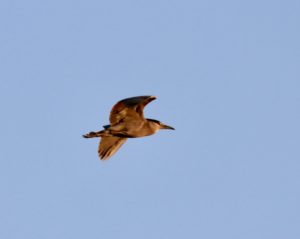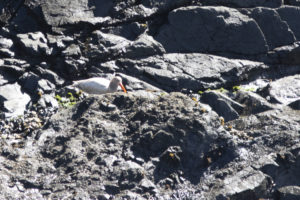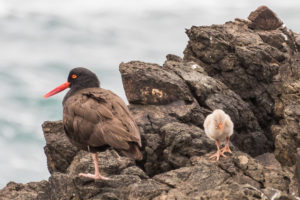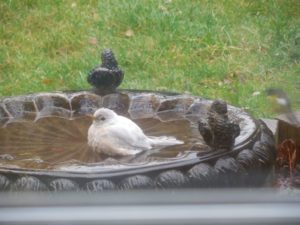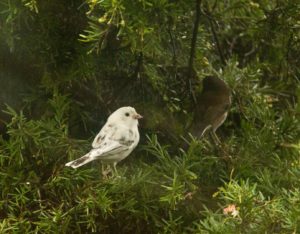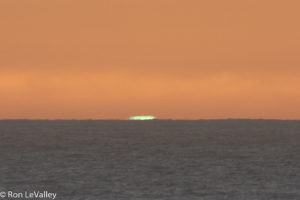It was a mystery. About three or four weeks ago Mary Heibel was hiking at the Point Arena-Stornetta Lands, near the Field Station. She found approximately 12 broken shells right near the bluff edge. She brought one to me. It’s bigger than a chicken egg, tan with gray and dark brown splotches, almost as if an artist had thrown paint at the shell. Osprey eggs comes closest in looks, but 12 eggs? There was no discernable nest according to Mary. I wondered what birds might produce a dozen eggs and an egg quite large. Wild Turkey eggs were not a match.
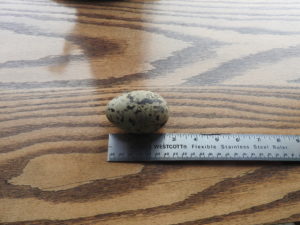
Diane Hichwa provided the first clue. She theorized that the spot was an eating place rather than a nesting spot. Dave Jensen suggested looking at Western Gull and Common Murre eggs as a reference. Dave suggested Common Ravens could have been egg thieves. He wrote, “They often work in pairs, one to distract and the other to snatch. Their increasing population proves the point.”
The eggs were a match for Western Gulls. Doug Forsell had more insights. He wrote, “For at least four years now a pair of Ravens have been taking the eggs from the Cormorant colonies along the cliffs and on the island near the Field Station. Last year, during the Discover the Coast event, I watched the ravens taking both Pelagic Cormorant and Western Gull eggs.”
Ravens also steal Common Murre eggs. Ron LeValley sent along a photo of a raven flying with one in its beak.

Seabirds are shy in comparison with ravens. Doug shared a video where a raven flew to a Pelagic Cormorant’s nest and pushed the nesting mother off the nest. The raven the stole the lone egg. https://youtu.be/Upw4D0OamEc
Common Ravens eat everything, including carrion. We have an overabundance of ravens here and one of the reasons is that we humans are feeding them. For the sake of the seabirds, we must stop.
Thanks to Ron for allowing me to share his photo with you. Quite a mystery tour this ended up to be. I appreciate everyone who helped solve it.
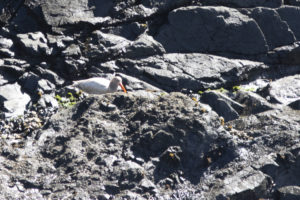 It's not the first time a nearly white Black Oystercatcher has been born up there. Last year Roger Adamson photographed a leucistic chick.
It's not the first time a nearly white Black Oystercatcher has been born up there. Last year Roger Adamson photographed a leucistic chick.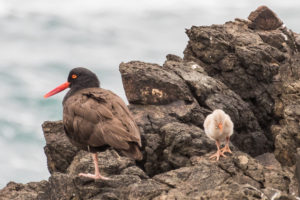 These anomalies appear in nature, but they always seem to catch us by surprise and bring a little wonder into our lives.
These anomalies appear in nature, but they always seem to catch us by surprise and bring a little wonder into our lives.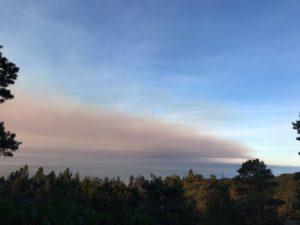 The smoke has dissipated somewhat this afternoon. I hope the fires can be brought under containment soon. It's so sad.
The smoke has dissipated somewhat this afternoon. I hope the fires can be brought under containment soon. It's so sad.